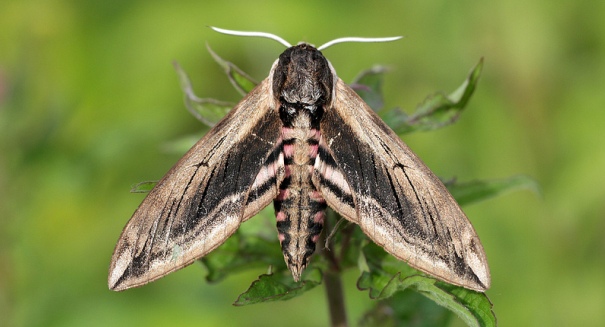
Hawkmoths are among the quickest and most skilled flying insects.
Researchers at the University of Florida have discovered that hawkmoths use ultrasound to combat bats. Similarly, fighter pilots have been jamming enemy radar for years in order to evade their opponents.
The study reveals that the hawkmoths blast bats with sonic pulses from their genitals to counter bats generating the high-frequency sounds, likely as a self-defense technique to impede the echolocation capacity of their opponents.
According to UF researchers, echolocation studies may be utilized to elevate ultrasound as an important tool in medicine, employed for watching prenatal development, determining blood flow and identifying tumors.
According to co-author Akito Kawahara, assistant curator of Lepidoptera at the Florida Museum of Natural History, ultrasound ability has only been proven in one other moth group.
Prior to this study, most echolocation research has been centered on porpoises, whales and dolphins, said Kawahara. The finding, however, of a moth using ultrasound to jam the echolocation ability of bats is “exciting.”
According to UF researchers, hawkmoths are important pollinators and are frequently used model organisms for genetic studies given their large size.
Earlier research revealed that tiger moths utilize ultrasound as a defense mechanism. While tiger moths generate the sound using a vibrating membrane found on the thorax, hawkmoths create the sound using a system found in the genitals.
The researchers discovered that at least three hawkmoth species generate ultrasonic sound. They think hawkmoths may generate the sound as a physical defense, to caution others or to impede the bats’ echolocation, which stumps their opponents so that they may not be able recognize their prey or determine where it is located, according to Kawahara.
This particular study was done in Malaysia, which has an extremely high diversity of hawkmoths. Kawahara also did some research in Borneo and the lower Amazon.
According to Kawahara, a lot of work has been centered on animals that are alert during the day, but there are plenty of fascinating things taking place at night. The inability to see or hear what’s going on at night makes researching these activities more difficult, but it means that there are a lot of new findings to be made.
Kawahara and his colleagues utilized high-energy lamps to capture the hawkmoths in the jungle. Study co-author Jesse Barber and his colleagues played pre-recorded bat sounds to the hawkmoths, and all of the researchers examined their response. Using an ultrasonic microphone and speaker, researchers documented the sounds the hawkmoths produced in response to being touched and hearing the echolocation sounds.

According to Kawahara, the purpose of documenting their response is to have a record of that information along with specimen and DNA. This combination will lead to many “interesting” findings.
Hawkmoths are among the quickest and most skilled flying insects. Their long mouthpart means they are key pollinators for agriculture. In fact, a lot of plants may only be pollinated by these insects.
According to Kawahara, the researchers will continue examining the use of ultrasound in hawkmoths, concentrating on the evolution of the insects to determine whether other hawkmoth species utilize this ability as a physical defense against their opponents.
Kawahara posited that hawkmoths have evolved self-defense mechanisms for dealing with bats because they are likely a primary food source for the flying creatures.
The study is discussed in greater detail in the journal Biology Letters.
Leave a Reply